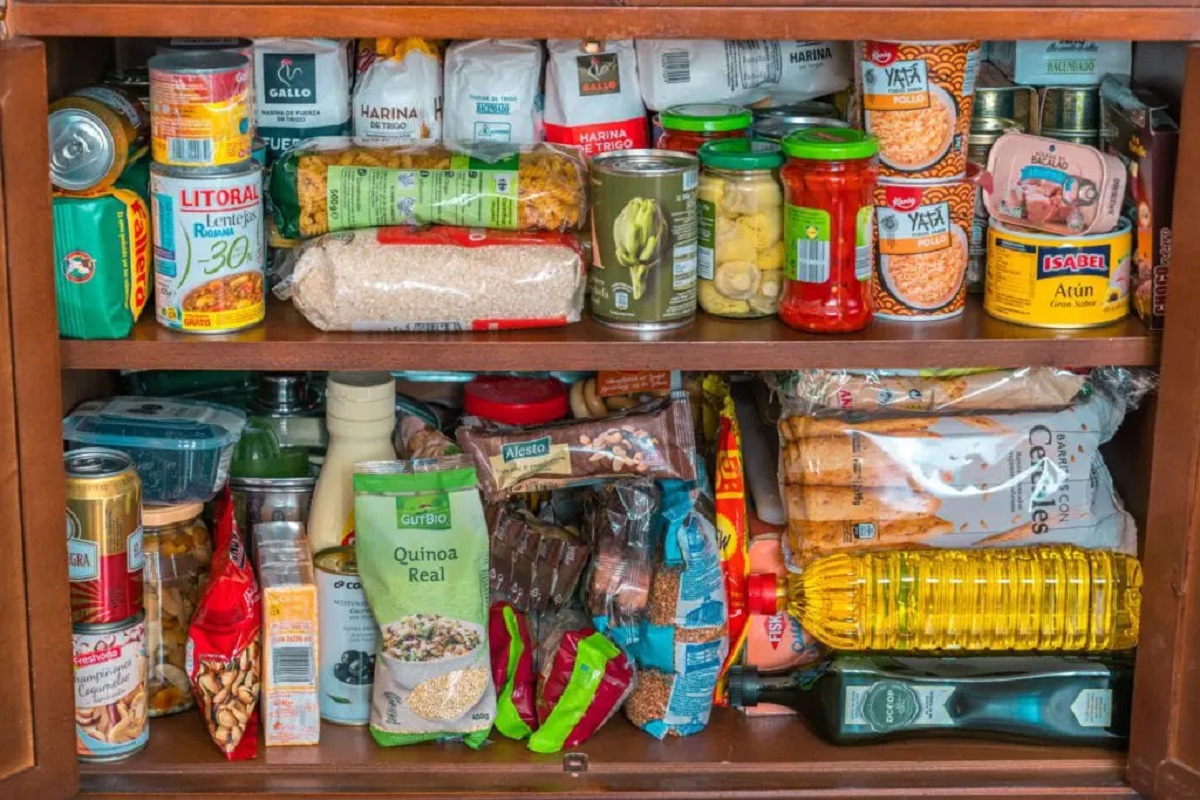

Articles
What Causes Moths In The Pantry
Modified: August 28, 2024
Discover the main culprits behind pantry moths with this comprehensive guide. Learn how home maintenance practices can prevent infestations.
(Many of the links in this article redirect to a specific reviewed product. Your purchase of these products through affiliate links helps to generate commission for Storables.com, at no extra cost. Learn more)
Introduction
Welcome to our comprehensive guide on what causes moths in the pantry. Pantry moths, also known as Indian meal moths or pantry pests, are common household pests that can wreak havoc on your stored food items. These pesky insects can contaminate your pantry staples, such as flour, grains, cereals, and pet food, causing frustration and financial loss.
Understanding the root causes of pantry moth infestations is crucial for effective prevention and control. By identifying the factors that attract these pests and implementing preventive measures, you can keep your pantry moth-free and protect your food supplies.
In this article, we will explore the common types of pantry moths, their life cycle, and signs of infestation. We will then delve into the causes of pantry moths and provide practical tips to prevent and control these pests in your pantry.
Let’s jump right in and gain a deeper understanding of pantry moths and the factors that contribute to their presence in our kitchens.
Key Takeaways:
- Proper food storage techniques, regular cleaning, and disposal of infested items are essential in preventing and controlling pantry moth infestations. Implementing traps and insecticides as part of an integrated approach can effectively disrupt the reproductive cycle of pantry moths.
- Vigilance, consistency, and proactive measures are key in combating pantry moth infestations. By maintaining good kitchen hygiene, sealing cracks and gaps, and implementing a rotation system for pantry items, you can create an environment that is less attractive to pantry moths.
Read more: What Causes Carpet Moths
Understanding Pantry Moths
Pantry moths, scientifically known as Plodia interpunctella, are small winged insects belonging to the family Pyralidae. They are commonly found in households around the world, infesting stored food items and causing damage and contamination. Understanding their characteristics and behavior is essential for effectively dealing with an infestation.
These moths are typically about 1/2 inch (12-15 mm) in length and have a wingspan of around 3/4 inch (20 mm). The forewings of pantry moths are mottled in shades of gray, brown, and copper, while the hindwings are usually a solid, lighter color. When at rest, their wings fold tightly, creating a distinct triangular shape.
Pantry moths are primarily active at night and are attracted to sources of light and warmth. They are strong fliers and can easily find their way into your kitchen or pantry through open windows, doors, or even cracks in walls. Once they have gained access to your food storage area, they can quickly start reproducing and infesting your pantry staples.
It’s important to note that pantry moths are not harmful to humans. They do not bite or sting, and they do not transmit diseases. However, their larvae, known as “mealworms,” are the ones responsible for contaminating food. The larvae hatch from eggs laid by the adult moths and feed on a variety of dry food items, including grains, cereals, flour, nuts, dried fruits, and spices.
The presence of pantry moths in your kitchen can be a cause for concern. Not only can they consume and contaminate your food, but their presence can also be an indication of unsanitary conditions or poor food storage practices. It’s crucial to act promptly at the first sign of pantry moths to prevent a full-blown infestation.
In the next sections, we will explore different types of pantry moth species, their life cycle, and the signs to look out for to identify an infestation in your pantry.
Common Types of Pantry Moths
There are several species of pantry moths, but the two most common ones are the Indian meal moth (Plodia interpunctella) and the Mediterranean flour moth (Ephestia kuehniella). Understanding these different types of pantry moths can help in identifying and dealing with an infestation.
1. Indian Meal Moth (Plodia interpunctella): This is the most common pantry moth species found in homes. The adult Indian meal moths have a distinctive reddish-brown color on the outer two-thirds of their wings, with a coppery or brassy sheen. The inner third of their wings is pale gray or silver. Indian meal moths are attracted to a wide range of pantry staples, including grains, dried fruits, cereal products, pet food, and even birdseed.
2. Mediterranean Flour Moth (Ephestia kuehniella): Less common than Indian meal moths, Mediterranean flour moths are similar in appearance but have a more uniform brown color on their wings. They are particularly attracted to flour and grain products, such as bread, pasta, and cake mixes.
While these two species are the most prevalent, other types of pantry moths, such as the almond moth and the raisin moth, can occasionally infest stored food as well.
No matter the species, pantry moths share similar behaviors and characteristics. Their larvae, often referred to as mealworms, are the most damaging stage of their life cycle. The larvae hatch from eggs laid by adult moths and feed on food items, leaving behind webbing and fecal matter that contaminate the products and render them inedible.
By being able to identify the different types of pantry moths, you can take appropriate actions to prevent and control infestations effectively. Now that we understand the various species, let’s explore the life cycle of pantry moths in the next section.
Life Cycle of Pantry Moths
Understanding the life cycle of pantry moths is crucial for effective prevention and control. By knowing the different stages of their development, you can target their vulnerabilities and disrupt their life cycle to eradicate them from your pantry.
The life cycle of pantry moths consists of four main stages: egg, larva, pupa, and adult.
1. Eggs: Adult female pantry moths lay their eggs on or near food sources. Each female can lay hundreds of eggs during her short adult lifespan. The eggs are tiny and difficult to spot, usually measuring about 0.5 mm in size. They are white or cream-colored and are attached to food items or nestled within crevices and cracks in packaging.
2. Larvae: After a few days, the eggs hatch into small, cream-colored larvae, commonly known as mealworms. The larvae are the most destructive stage of the pantry moth’s life cycle. They actively feed on food items, spinning silk webbing as they move and contaminate the surrounding area. The larvae go through several molts, growing in size and leaving behind excrement, webbing, and discarded skins.
3. Pupa: Once the larvae are fully grown, they find a concealed spot within the pantry or food packaging to pupate. The larvae encase themselves in a cocoon-like structure called a pupa, which provides protection during their transformation into adult moths. The pupal stage can last anywhere from one to several weeks, depending on environmental conditions.
4. Adults: After the pupal stage is complete, adult pantry moths emerge from their cocoons. They are sexually mature and ready to mate within a few days. The adult moths are primarily active during the nighttime and are attracted to light. They have a lifespan of about one to two weeks, during which they lay eggs and continue the cycle.
The complete life cycle of pantry moths can take anywhere from 30 to 300 days, depending on environmental factors such as temperature and food availability. Understanding the duration and stages of their life cycle is essential for developing effective control strategies.
Now that we have a clear understanding of the life cycle of pantry moths, let’s move on to the next section and learn how to identify signs of an infestation in your pantry.
Infestation Signs and Identification
Identifying the signs of a pantry moth infestation is crucial for early detection and prompt action. By recognizing these signs, you can prevent extensive damage to your stored food items and take the necessary steps to eliminate the infestation. Here are some common indicators to look out for:
- Webbing: One of the primary signs of a pantry moth infestation is the presence of silky webbing. Pantry moth larvae spin this webbing as they move and feed on food items. Look for thin, white threads or cobwebs in your pantry, especially on the packaging and surfaces of stored food.
- Damage to Packaging: Pantry moths often chew through cardboard, plastic, or paper packaging to access food. If you notice small holes or tears in your food packaging, it could be a sign of pantry moths.
- Cocoons or Pupae: During the pupal stage, pantry moth larvae encase themselves in cocoons, often hidden in cracks, crevices, or corners of your pantry. Look for small, silk-like structures or debris resembling cocoons.
- Larvae or Mealworms: Spotting actual pantry moth larvae, also known as mealworms, is a clear indication of an infestation. These cream-colored larvae are usually around half an inch in length and can be found crawling on food surfaces or in the corners of your pantry.
- Adult Moths: Spotting adult pantry moths flying around your pantry or near light sources is a strong indication of an infestation. These moths are typically reddish-brown or coppery in color, with their wings partially folded at rest. Keep in mind that a single adult moth sighting may indicate a larger infestation.
- Contaminated or Damaged Food: Pantry moth larvae feed on a wide range of dry food items, leading to visible signs of damage. Look for chewed grains, cereal debris, webbing, or excrement in your stored food.
If you notice any of these signs, it is essential to take immediate action to prevent the infestation from spreading. Thoroughly inspect your pantry, discard infested food items, and clean all surfaces and shelves to eliminate any remaining eggs, larvae, or pupae. By addressing an infestation early on, you can prevent further damage and minimize the risk of reinfestation in the future.
Next, let’s explore the causes of pantry moths and what attracts them to your pantry.
Read more: Pantry Moth How To Get Rid Of
Causes of Pantry Moths
Pantry moths can be a persistent nuisance in your kitchen, but understanding the causes behind their infestation can help you prevent their presence and safeguard your stored food items. Here are some common causes of pantry moths:
1. Poor Food Storage Practices: Improper storage of food is one of the primary causes of pantry moth infestations. Leaving food items unsealed or using flimsy packaging can easily attract pantry moths. Moisture, warmth, and accessibility to food sources are all factors that contribute to infestation. Make sure to store dry pantry staples in airtight containers or sealable plastic bags to limit potential infestation opportunities.
2. Contaminated Grocery Items: Pantry moths can easily find their way into your home through already infested grocery items. These pests can hitch a ride from infested grains, cereals, or other food products that you bring into your kitchen. It’s crucial to inspect and check for signs of infestation before storing newly purchased food items in your pantry.
3. Attracted by Light and Heat: Pantry moths are naturally attracted to light sources. They will often fly towards windows or light fixtures, eventually finding their way into your pantry if there are cracks or openings. Additionally, moths are drawn to warm environments, so keeping your pantry area cool can help deter them from settling in.
4. Cracks and Gaps in Pantry: Pantry moths can enter your kitchen and pantry through small openings and gaps. Cracks in walls, improperly sealed doors, or broken window screens can provide easy entry points for these pests. Regularly inspect and seal any cracks or openings in your pantry to prevent moths from entering and establishing their presence.
5. Other Attractants in the Pantry: Aside from food, pantry moths can also be attracted to other items found in your pantry. This includes natural fibers, such as wool or pet hair, and even certain spices or herbs that have a strong scent. Keep non-food items properly stored and maintain cleanliness in your pantry to reduce the potential attractiveness to pantry moths.
Understanding the causes of pantry moths can help you take proactive steps to prevent infestation. By implementing proper food storage practices, inspecting incoming grocery items, sealing cracks and gaps, and minimizing attractants, you can significantly reduce the likelihood of pantry moth presence in your kitchen.
In the next section, we will discuss effective prevention and control methods to keep pantry moths at bay.
Poor Food Storage Practices
Poor food storage practices are one of the leading causes of pantry moth infestations. Failing to properly store your pantry staples can create an inviting environment for these pests to thrive. Here are some common poor food storage practices that can attract pantry moths:
- Unsealed or Poorly Sealed Packaging: Leaving your food items in unsealed or poorly sealed packaging exposes them to pantry moths. These pests can easily chew through flimsy bags, paper packaging, or cardboard boxes to access the food inside. It’s essential to transfer your dry pantry staples into airtight containers to prevent pantry moth infestation.
- Overstocking or Bulk Storage: Buying food in bulk can be cost-effective, but it can also increase the risk of pantry moth infestations if not properly managed. Overstocking your pantry and leaving excessive amounts of food in open bags or containers provides more opportunities for pantry moths to find their way in and reproduce. It’s best to only purchase what you can reasonably consume within a reasonable timeframe.
- Failure to Rotate Food Items: Rotating your food items is crucial to ensure that older products are used first and fresher ones are brought to the front. Pantry moths are more likely to infest older grains, cereals, or spices that have been sitting untouched for extended periods. By practicing a “first in, first out” approach, you can minimize the chances of pantry moth infestation.
- Not Checking for Infested Grocery Items: Pantry moths can easily hitch a ride into your kitchen through infested grocery items. Failing to check for signs of infestation before storing newly purchased food can introduce pantry moths into your pantry. Take the time to inspect packaging for tears, webbing, or larvae before bringing them home.
- Neglecting Cleaning and Inspections: Regular cleaning and inspections of your pantry are essential to prevent pantry moth infestations. Neglecting to clean shelves, corners, or spills can create an environment that attracts pantry moths. Make it a habit to clean your pantry regularly, discard expired items, and inspect for signs of pantry moth activity.
By practicing good food storage habits, you can significantly reduce the risk of pantry moth infestations. Invest in airtight containers for your pantry staples, avoid overstocking, rotate your food items, and consistently clean and inspect your pantry. These simple but effective practices can go a long way in keeping pantry moths away and preserving the quality of your stored food.
Now that we understand the importance of proper food storage, let’s explore additional prevention and control methods to combat pantry moths in the next section.
Contaminated Grocery Items
Contaminated grocery items can be a significant source of pantry moth infestations in your kitchen. These pests can easily hitch a ride into your home through already infested food products. It’s crucial to be vigilant and inspect your groceries to prevent introducing pantry moths into your pantry. Here are some important factors to consider:
1. Quality Control at the Store: While grocery stores and suppliers make efforts to maintain quality control, infested products can still make their way onto the shelves. Inspect the packaging of the items you are purchasing for any signs of damage, tears, or webbing. Avoid purchasing anything that appears suspicious or already infested.
2. Bulk Food Bins: Bulk food bins, commonly found in grocery stores, can be a potential source of pantry moth infestation. These bins often contain grains, cereals, nuts, and other dry goods that pantry moths are attracted to. Take extra caution when purchasing items from bulk bins, as they may potentially be contaminated with pantry moth eggs or larvae.
3. Carefully Inspect Packaging: Before storing newly purchased items in your pantry, inspect the packaging thoroughly. Look for signs of webbing, larvae, or adult moths inside or outside the packaging. Pay attention to the corners, seams, and folds of the packaging, as pantry moths may hide in these areas.
4. Freeze Susceptible Items: If you are concerned about potential infestations in specific food items, such as grains or flour, you can take proactive measures by freezing them. Placing these items in the freezer for a few days can help kill any eggs or larvae that may be present, eliminating the risk of introducing infestations into your pantry.
5. Store in Airtight Containers: Upon bringing your groceries home, transfer the items into airtight containers before storing them in your pantry. This additional layer of protection can help prevent pantry moths from accessing the food and infesting it. Make sure to clean the containers thoroughly before use to ensure there are no existing pantry moth eggs or larvae.
Remember, it’s important to remain vigilant when purchasing and storing grocery items to minimize the risk of pantry moth infestations. Taking simple precautions such as inspecting packaging, freezing susceptible items, and using airtight containers can go a long way in preventing the introduction of pantry moths into your kitchen.
In the next section, we will discuss other factors that can attract pantry moths and how to address them to keep your pantry moth-free.
Attracted by Light and Heat
One of the interesting behaviors of pantry moths is their attraction to light and heat. Understanding this aspect of their behavior can help you implement effective prevention and control measures. Here’s why pantry moths are drawn to light and heat:
Light Attraction: Pantry moths are naturally attracted to light sources. They have a phototactic behavior, meaning they are drawn to sources of light, especially during their nightly activity periods. This attraction to light can make them more noticeable and increase the chances of them finding their way into your pantry or kitchen. They may fly towards windows, light fixtures, or open doorways in search of light.
Heat Attraction: In addition to light, pantry moths are also attracted to sources of heat. They are particularly drawn to warm environments, as warm temperatures can aid in their reproductive process. Heat sources like ovens, stoves, or even appliances that emit warmth can create an environment that pantry moths find attractive.
So, how can you address the issue of pantry moths being attracted to light and heat? Here are some helpful tips:
- Minimize Light Exposure: Keep your pantry and kitchen as dark as possible during nighttime hours. Use dimmer lighting or switch to red or yellow light bulbs, as these are less attractive to pantry moths. Consider using motion sensor lights that activate only when needed to reduce the constant exposure of light in your pantry.
- Seal Access Points: Pantry moths can enter your kitchen through doors, windows, or cracks in walls. Seal any openings or gaps to prevent their entry. Install weatherstripping around doors and windows, use caulk to seal cracks in walls or cabinets, and ensure window screens are intact and secure.
- Cool Down the Pantry: Pantry moths are less likely to be attracted to cooler environments. Keep the temperature in your pantry low by using natural cooling methods such as opening windows during cooler times of the day or using a fan to circulate air. Avoid placing the pantry near heat sources like ovens or appliances that generate warmth.
- Use Insect-Repelling Herbs and Spices: Certain herbs and spices have natural insect-repellent properties. Placing sachets or containers with herbs like bay leaves, cloves, or dried lavender in your pantry can help deter pantry moths. Their strong scents can act as a deterrent and make the environment less attractive to these pests.
- Regularly Clean Light Fixtures: Pantry moths may be attracted to light fixtures in your kitchen or pantry. Clean your light fixtures regularly to remove any accumulated debris or food particles, which can serve as attractants for pantry moths. Keeping the area around light fixtures clean can help reduce their attraction to these areas.
By addressing the factors that attract pantry moths to light and heat, you can create an environment that is less inviting for these pests. Minimizing light exposure, sealing access points, cooling down the pantry, using insect-repelling herbs, and keeping light fixtures clean are all effective strategies for deterring pantry moths.
In the next section, we will discuss another contributing factor to pantry moth infestations – cracks and gaps in your pantry.
To prevent moths in the pantry, store food in airtight containers, regularly clean shelves and corners, and use bay leaves or cedar blocks as natural repellents.
Read more: What Do Pantry Moths Eggs Look Like
Cracks and Gaps in Pantry
Cracks and gaps in your pantry provide an entry point for pantry moths and can contribute to infestations. These tiny openings may go unnoticed, but they can serve as a gateway for pantry moths to enter your kitchen and contaminate your stored food items. Here’s why addressing cracks and gaps in your pantry is essential:
Entry Points for Pantry Moths: Pantry moths can squeeze through even the smallest openings. Cracks in walls, gaps in cabinets, or spaces around pipes and utility lines are potential entry points for these pests. Once inside, they can quickly infest your pantry and cause damage to your food supplies.
Hidden Breeding Grounds: Cracks and gaps in your pantry provide sheltered areas for pantry moths to lay their eggs and for larvae to develop. These dark and undisturbed spaces offer favorable conditions for pantry moths to reproduce and build their population. If left unaddressed, the infestation can quickly escalate.
It’s crucial to identify and address cracks and gaps in your pantry to prevent pantry moth infestations. Here are some steps you can take:
- Inspect Pantry and Cabinets: Thoroughly inspect your pantry and cabinets for any visible cracks or gaps. Pay attention to corners, seams, joints, and areas where cabinets meet the walls. Look for any signs of damage or openings that pantry moths could potentially use as entry points.
- Seal Cracks and Gaps: Once you’ve identified the cracks and gaps in your pantry, it’s essential to seal them properly. Use an appropriate sealant, such as caulk or silicone, to seal any visible cracks in walls or cabinets. Install weatherstripping around doors or windows, ensuring a tight seal to prevent pantry moths from entering.
- Fill Gaps with Foam: For larger gaps or openings, consider using expanding foam insulation. This foam expands to fill the gaps, creating a barrier that pantry moths cannot penetrate. Be careful when using expanding foam, following the manufacturer’s instructions and ensuring proper ventilation during the application process.
- Repair Damaged Walls or Cabinets: If there are any damaged areas in your pantry or cabinets, such as holes or broken wood, repair them promptly. These damaged areas can serve as entry points for pantry moths or provide a suitable environment for them to hide and reproduce.
- Maintain Regular Inspections: To prevent future infestations, it’s important to conduct regular inspections of your pantry and kitchen. Check for any new cracks or gaps that may have developed over time and address them promptly. By monitoring and maintaining your pantry’s integrity, you can reduce the risk of pantry moth infestations.
Addressing cracks and gaps in your pantry is crucial for effective prevention of pantry moth infestations. By sealing these openings, you can eliminate potential entry points and create a fortified environment that is less susceptible to pest infiltration.
In the next section, we will explore additional attractants in the pantry that can contribute to pantry moth infestations.
Other Attractants in the Pantry
In addition to food and environmental factors, there are other attractants in the pantry that can contribute to pantry moth infestations. Understanding these factors can help you identify and address potential attractants to create an environment that is less appealing to pantry moths. Here are some common attractants to be aware of:
Natural Fibers: Pantry moths are attracted to natural fibers, such as wool, hair, or feathers. If your pantry contains items like wool clothing, pet hair, or feathered decorations, they can serve as potential attractants for pantry moths. It’s important to keep these items properly stored and away from your food supplies.
Spices and Herbs: While spices and herbs add flavor to your culinary creations, certain ones can also attract pantry moths. Strongly scented spices like cinnamon, cloves, or dried chili peppers can be enticing to pantry moths. Store your spices in airtight containers and keep them clean to minimize the potential attractant for these pests.
Crumbs and Spills: Crumbs and spills in your pantry can attract pantry moths as they provide a ready food source. Regularly clean your pantry shelves, paying attention to spilled grains, flour, or crumbs. Vacuum or wipe down shelves to remove any residue that could serve as an attractant for pantry moths.
Decaying Organic Matter: If you have a compost bin or garbage can in or near your pantry, it’s important to manage them properly. Decaying organic matter can serve as a breeding ground for pantry moths, attracting them to the vicinity. Make sure to seal compost bins tightly and regularly empty and clean your garbage cans to prevent infestations.
By addressing these additional attractants in your pantry, you can reduce the chances of pantry moth infestations. Here are some steps to consider:
- Properly Store Natural Fibers: Keep any natural fibers like wool clothing, pet hair, or feathers in sealed containers or storage bags to prevent pantry moths from being attracted to them.
- Keep Spices and Herbs Airtight: Store spices and herbs in airtight containers to minimize their scent from attracting pantry moths. Check for any signs of infestation within spice containers and discard any contaminated products.
- Regularly Clean and Declutter: Clean your pantry shelves regularly, removing any spilled food, crumbs, or debris. Vacuum or wipe down shelves to remove any remaining attractants.
- Manage Compost and Garbage Properly: Seal your compost bin tightly and regularly empty it to prevent decaying organic matter from becoming an attractant. Ensure that garbage cans in or near your pantry are tightly sealed and regularly cleaned.
By addressing these other attractants in your pantry, you can create a less favorable environment for pantry moths. Implementing these steps, along with proper food storage practices and regular inspections, can significantly reduce the risk of pantry moth infestations.
In the next section, we will delve into prevention and control methods to keep pantry moths at bay and maintain a pantry free from these pests.
Prevention and Control Methods
To keep your pantry free from pantry moth infestations, it’s essential to implement effective prevention and control methods. By combining proper food storage practices, regular cleaning and inspections, and targeted interventions, you can significantly reduce the risk of pantry moth presence in your kitchen. Here are some key prevention and control methods:
Proper Food Storage Techniques: Store your dry pantry staples, such as grains, cereals, flour, and pet food, in airtight containers. This helps prevent pantry moths from accessing the food and laying their eggs. Inspect incoming grocery items for signs of infestation before storing them, and avoid overstocking your pantry to minimize attractants.
Regular Cleaning and Inspections: Clean your pantry shelves regularly, removing any spilled food, crumbs, or debris. Vacuum or wipe down shelves to eliminate any remaining attractants. Regularly inspect your pantry for signs of infestation, such as webbing, larvae, or adult moths. Promptly discard any infested items and clean all surfaces to prevent further spread.
Dispose of Infested Items: If you discover infested food items in your pantry, dispose of them immediately. Seal them in a plastic bag and discard them in an outdoor trash receptacle. Do not compost or keep infested items, as this can lead to further infestations.
Use of Traps and Insecticides: Utilize pantry moth traps to monitor and catch adult moths. These traps use pheromones to attract male moths, preventing them from reproducing. Additionally, consider using insecticides specifically labeled for pantry moths. Ensure that any insecticides are used safely and according to the instructions provided.
Pest-Proof Your Pantry: Seal cracks, gaps, and other potential entry points to prevent pantry moths from entering your pantry. Install weatherstripping around doors and windows, use caulk to seal cracks, and repair any damaged areas. Keeping your pantry well-sealed makes it more difficult for pantry moths to gain access.
Monitor and Rotate Stock: Implement a regular rotation system for your pantry items, using the “first in, first out” principle. This ensures that older items are used before newer ones, reducing the chances of pantry moth infestations. Regularly check for expiration dates and discard any expired or outdated products.
Maintain Good Kitchen Hygiene: In addition to the pantry, practice good kitchen hygiene. Clean up spills and crumbs immediately, and regularly sweep and mop the kitchen floor. Keep countertops and appliances clean to eliminate potential food sources for pantry moths.
By incorporating these prevention and control methods into your routine, you can effectively minimize the risk of pantry moth infestations and maintain a clean, pest-free pantry. Remember to stay vigilant and take prompt action at the first sign of infestation to prevent the situation from escalating.
Now that you have a comprehensive understanding of prevention and control methods, you are well-equipped to keep pantry moths at bay and ensure the integrity of your stored food items.
Proper Food Storage Techniques
Proper food storage techniques are essential for preventing pantry moth infestations and maintaining the quality and freshness of your pantry staples. By utilizing appropriate storage methods, you can create a pantry environment that is less attractive to pantry moths and other pests. Here are some key tips for proper food storage:
1. Invest in Airtight Containers: Transfer dry pantry staples, such as grains, cereals, flour, nuts, and dried fruits, into airtight containers. These containers create a barrier and prevent pantry moths from accessing the food. Ensure that the lids fit tightly and do not leave any gaps where pests can enter.
2. Seal or Wrap Partially Consumed Packages: If you have opened packages or partially consumed items, ensure they are properly resealed or tightly wrapped. This prevents pantry moths from detecting the scent and accessing the food. Use sealable plastic bags, clips, or rubber bands to seal bags, and consider using plastic wrap or foil for items like bread or baked goods.
3. Avoid Cardboard or Paper Packaging: Cardboard or paper packaging can easily be chewed through by pantry moths. Whenever possible, opt for products that come in sturdy, insect-proof packaging. If you purchase items in flimsy packaging, transfer them into airtight containers as soon as possible.
4. Store in Cool and Dry Conditions: Pantry moths and other pests thrive in warm and humid environments. Store your pantry staples in a cool, dry area to discourage infestations. Avoid storing food near appliances that generate heat, such as ovens or stovetops, as this can attract pantry moths.
5. Rotate Stock – First In, First Out (FIFO): Implement a rotation system using the “first in, first out” principle. Place newer purchases behind older ones, ensuring that older items are used first. This reduces the likelihood of pantry moths infesting older products that may have been sitting for a longer period.
6. Regularly Check for Signs of Infestation: Periodically inspect your stored food items for signs of pantry moth infestation. Look for webbing, larvae, irregular holes, or signs of moisture or mold. Promptly discard any infested items, as they can serve as a breeding ground for pantry moths.
7. Clean Containers and Shelves: Regularly clean your airtight containers and pantry shelves to remove any food debris or residue that could attract pantry moths. Wipe down containers with warm, soapy water, rinse well, and let them dry thoroughly before refilling.
8. Avoid Overstocking: Maintain a well-stocked but controlled pantry. Avoid purchasing excessive amounts of food that cannot be consumed within a reasonable time frame. Overstocking can lead to older products sitting untouched for long periods and increasing the risk of pantry moth infestations.
By following these proper food storage techniques, you can minimize the risk of pantry moth infestations and ensure the longevity of your food supplies. By maintaining cleanliness, using airtight containers, and practicing rotation and inventory control, you can enjoy a well-organized pantry that remains pest-free.
Regular Cleaning and Inspections
Regular cleaning and inspections are crucial for preventing pantry moth infestations and maintaining a clean and pest-free pantry. By incorporating these practices into your routine, you can identify potential issues early on and take the necessary steps to address them. Here are key steps for regular cleaning and inspections:
1. Clearing Out and Organizing: Start by clearing out your pantry and organizing its contents. Remove all items from the shelves and thoroughly clean the empty pantry space. Discard any expired or spoiled products and consolidate similar items to facilitate easier access and monitoring.
2. Wiping Down Shelves and Surfaces: Use a damp cloth or sponge to wipe down pantry shelves, ensuring that all surfaces are clean and free from any residue. Pay special attention to corners, crevices, and the underside of shelves, as these areas can accumulate spills and debris that may attract pantry moths.
3. Vacuuming or Sweeping: Use a vacuum cleaner or broom to remove any food crumbs, debris, or webbing from the pantry floor. Make sure to reach into corners and tight spots. Eliminating these attractants provides fewer food sources for potential pantry moth infestations.
4. Inspecting for Signs of Infestation: Carefully inspect all food items for signs of pantry moth activity, such as webbing, larvae, or adult moths. Pay attention to packaging that may have been compromised or damaged. Dispose of any infested items in sealed bags and discard them in an outdoor trash container to prevent further infestation.
5. Checking for Leaks or Moisture: Pantry moths, like other pests, are attracted to moisture. Inspect your pantry for any signs of leaks or water damage. Address any plumbing issues and ensure proper ventilation to keep the pantry dry and inhospitable to pantry moth infestations.
6. Sealing Cracks and Gaps: Inspect your pantry for cracks, gaps, or openings that may serve as entry points for pantry moths. Seal any visible cracks or gaps with caulk or silicone to prevent pests from entering your pantry. Pay attention to areas where cabinets meet the wall, floor, or ceiling.
7. Monitoring Pantry Moth Traps: Consider placing pantry moth traps in your pantry as a preventative measure. These traps use pheromones to attract and catch adult moths, helping you monitor and control their presence. Regularly check the traps for any signs of pantry moth activity.
8. Scheduling Regular Maintenance: Set a schedule for regular maintenance and inspections of your pantry. Whether it’s weekly, monthly, or quarterly, sticking to a routine helps ensure that your pantry remains clean and free from pantry moth infestations. Stay consistent and make adjustments as needed.
By making regular cleaning and inspections a priority, you can uncover potential pantry moth infestations in the early stages and take immediate action. Maintaining a clean and well-organized pantry helps create an environment that is less attractive to pantry moths, reducing the risk of infestation and protecting your stored food items.
Now that you understand the importance of regular cleaning and inspections, you are on your way to maintaining a pantry that is both organized and pest-free.
Dispose of Infested Items
When dealing with pantry moth infestations, it is crucial to promptly dispose of any infested items to prevent further spread and minimize the risk of reinfestation. Proper disposal is an essential step in controlling the infestation and safeguarding the rest of your pantry. Here’s how to effectively dispose of infested items:
1. Identify Infested Items: Inspect your pantry thoroughly for signs of pantry moth infestation, such as webbing, larvae, or adult moths. Identify any food items that show clear signs of being infested. This can include packages with chewed-through packaging, presence of larvae or cocoons, or other indications of contamination.
2. Seal Infested Items: Once you have identified the infested items, seal them in a sturdy plastic bag. This will prevent pantry moths from escaping and spreading to other areas. Double-bagging can provide an extra layer of security to ensure containment.
3. Dispose of in Outdoor Trash Container: Take the sealed bags containing the infested items and promptly discard them in an outdoor trash container. Do not dispose of infested items in indoor trash cans, as pantry moths may still find a way to escape and infest your home further.
4. Avoid Composting Infested Items: It is essential to avoid composting any infested items. Pantry moths can continue their life cycle and reproduce within compost piles, potentially leading to a larger infestation. Dispose of infested items in the regular trash, away from your home.
5. Clean and Disinfect: After disposing of the infested items, it is crucial to thoroughly clean and disinfect the area where they were stored. Wipe down shelves, cabinets, and surrounding surfaces with a disinfectant cleaner to eliminate any remaining eggs, larvae, or pheromones that could attract future infestations.
6. Prevention Moving Forward: Once you have disposed of the infested items and cleaned the area, implement preventive measures to minimize the risk of pantry moth infestations in the future. Follow proper food storage techniques, conduct regular inspections, and maintain a clean and organized pantry.
Remember, disposing of infested items is a critical step in effectively controlling pantry moth infestations. Proper disposal helps prevent the spread of pantry moths and reduces the chances of reinfestation in your pantry and home. By taking swift action and following these disposal guidelines, you can regain control over your pantry and protect your stored food items from further damage.
In the next section, we will discuss additional methods to prevent and control pantry moths, including the use of traps and insecticides.
Use of Traps and Insecticides
Traps and insecticides are effective tools in preventing and controlling pantry moth infestations. They target adult moths, disrupting their reproductive cycle and reducing their population. By using traps and insecticides strategically, you can monitor and eliminate pantry moths in your kitchen and pantry. Here’s how to make the most of these methods:
Pantry Moth Traps: Pantry moth traps are designed to attract and capture adult moths. They typically consist of adhesive traps or pheromone-based traps that lure male moths. Female moths are unable to locate mates, thus reducing the reproductive cycle. Place these traps strategically in your pantry, particularly near infested areas or where you have noticed adult moth activity.
How to Use Pantry Moth Traps:
- Read and follow the instructions provided with the traps carefully.
- Place the traps in areas where pantry moths are commonly seen or near infested food items.
- Keep the traps away from food preparation areas to avoid contamination.
- Replace the traps according to the manufacturer’s directions or when they become full.
- Regularly monitor the traps for adult moth activity to assess the severity of the infestation.
Insecticides: Insecticides formulated specifically for pantry moth control can be used as a targeted approach to eradicate these pests. Choose insecticides labeled for pantry moths and follow the instructions carefully to ensure safe and effective use. It is important to note that using insecticides should be considered a last resort after exhausting other preventative and control methods.
How to Use Insecticides:
- Select an insecticide labeled for pantry moth control that is safely approved for use in food storage areas.
- Thoroughly read and follow the instructions and safety precautions provided with the insecticide.
- Identify the areas where pantry moths are active or likely to be present.
- Apply the insecticide as directed, focusing on cracks, crevices, and areas where moth activity is observed.
- Keep the treated area well-ventilated until the insecticide has dried or dissipated.
- Follow any recommended steps for cleaning or removing residual insecticide after treatment.
Remember, traps and insecticides are not standalone solutions. They should be used in conjunction with other prevention and control methods, such as proper food storage, regular cleaning and inspections, and sealing cracks and gaps in your pantry.
By incorporating traps and insecticides as part of an integrated approach to pantry moth control, you can effectively monitor and reduce the population of adult moths, disrupting their reproduction and minimizing the risk of future infestations.
In the next section, we will conclude with some key points and reiterate the importance of implementing preventive measures to keep your pantry moth-free.
Conclusion
Pantry moths can be a frustrating and unwanted presence in your kitchen and pantry. Understanding the causes and implementing effective prevention and control methods are crucial in keeping these pests at bay and preserving the quality of your stored food items. By following proper food storage practices, regularly cleaning and inspecting your pantry, and addressing potential attractants and entry points, you can minimize the risk of pantry moth infestations.
Proper food storage techniques, such as using airtight containers and sealing partially consumed packages, create a barrier that prevents pantry moths from accessing your pantry staples. Regular cleaning and inspections help you identify signs of infestation early on, allowing you to take immediate action. Disposing of infested items safely and cleaning and disinfecting the affected area further helps in controlling the infestation.
Additionally, implementing traps and using insecticides as targeted approaches can help monitor and eliminate adult moths, disrupting their reproductive cycle and reducing their population. However, it is important to use these methods in conjunction with other preventative measures and follow the instructions carefully to ensure safety and effectiveness.
Ultimately, prevention is key in combating pantry moth infestations. By maintaining good kitchen hygiene, conducting regular inspections, sealing cracks and gaps, and implementing a rotation system for your pantry items, you can create an environment that is less attractive to pantry moths. Vigilance and consistency in these practices will greatly reduce the risk of pantry moth infestations and preserve the integrity of your stored foods.
Remember to stay proactive and address any signs of infestation promptly. With diligence and the implementation of these prevention and control methods, you can keep your pantry moth-free and enjoy a well-organized and pest-free kitchen.
Frequently Asked Questions about What Causes Moths In The Pantry
Was this page helpful?
At Storables.com, we guarantee accurate and reliable information. Our content, validated by Expert Board Contributors, is crafted following stringent Editorial Policies. We're committed to providing you with well-researched, expert-backed insights for all your informational needs.

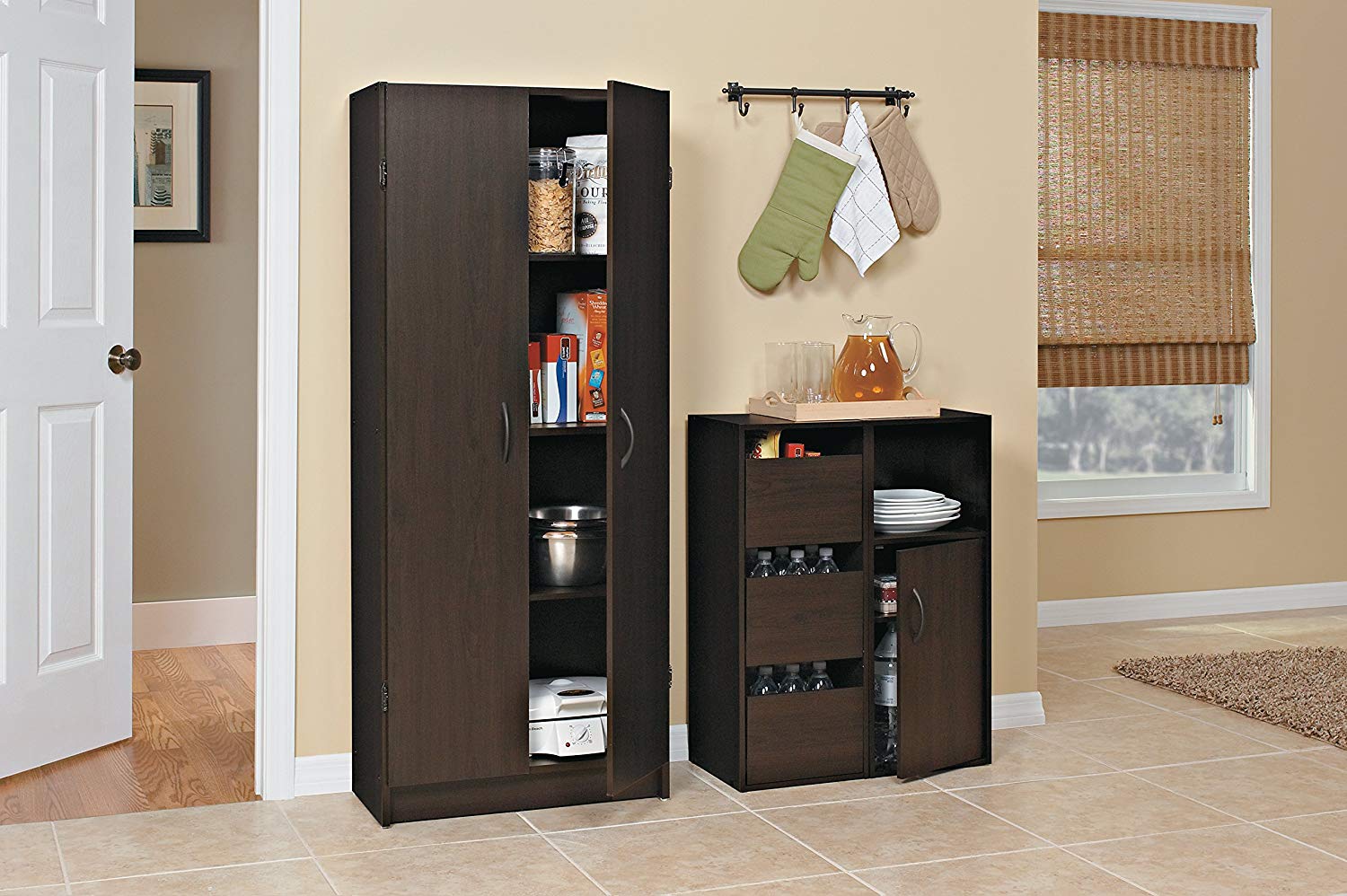
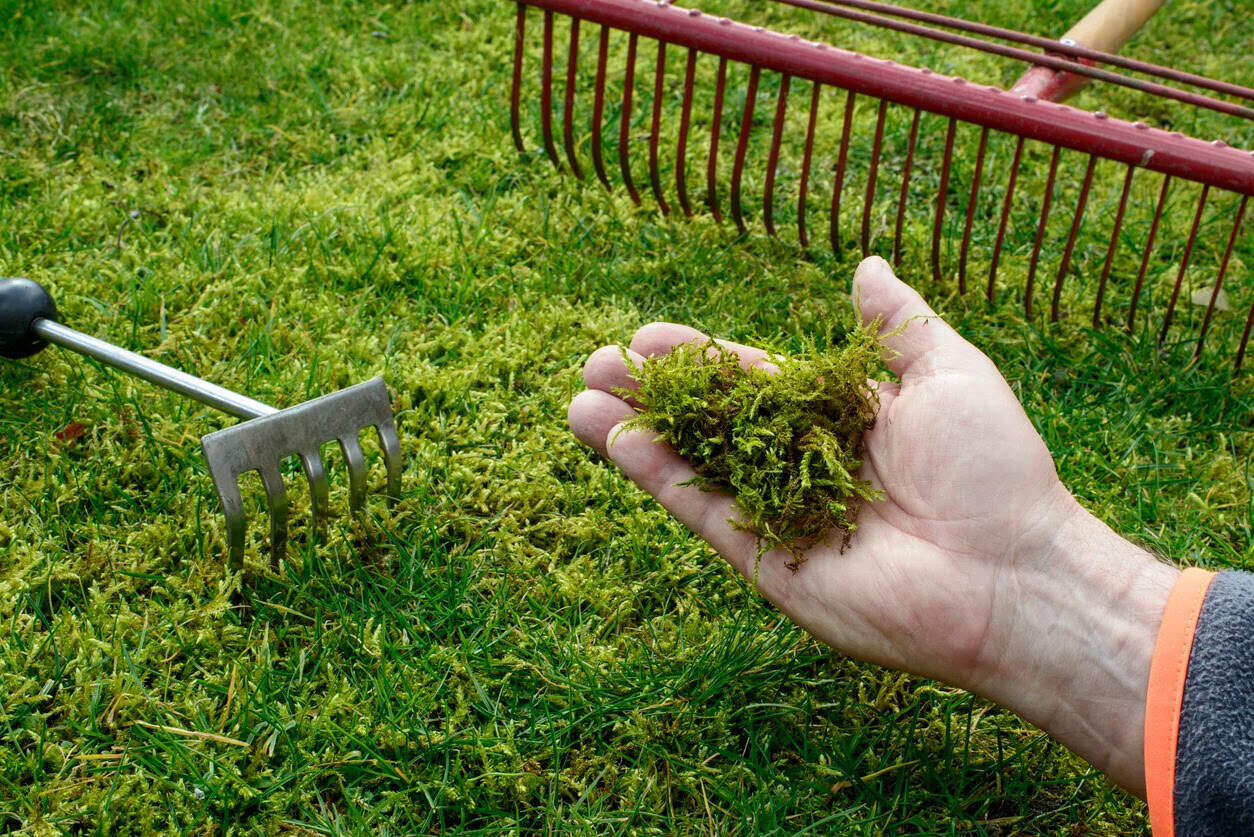





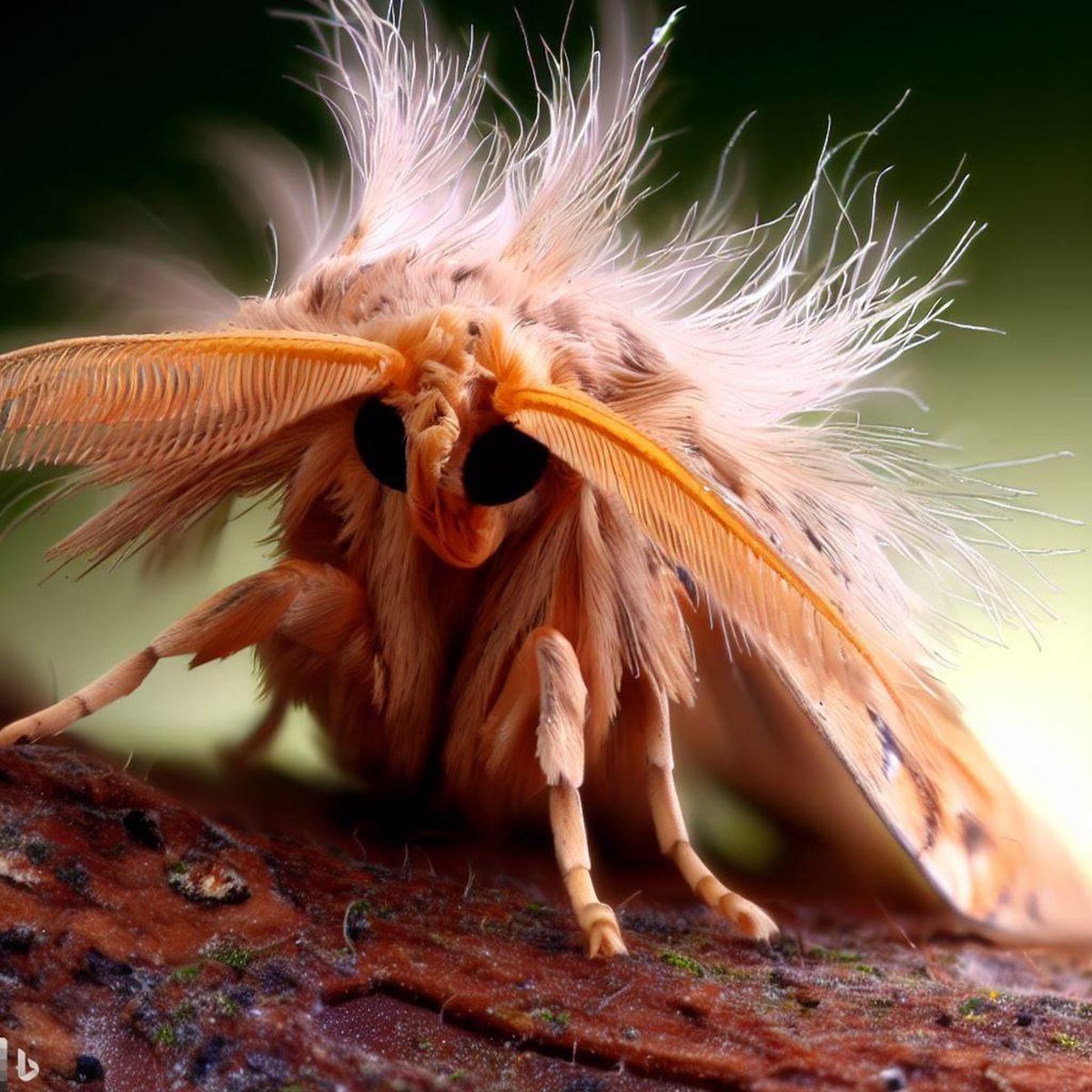


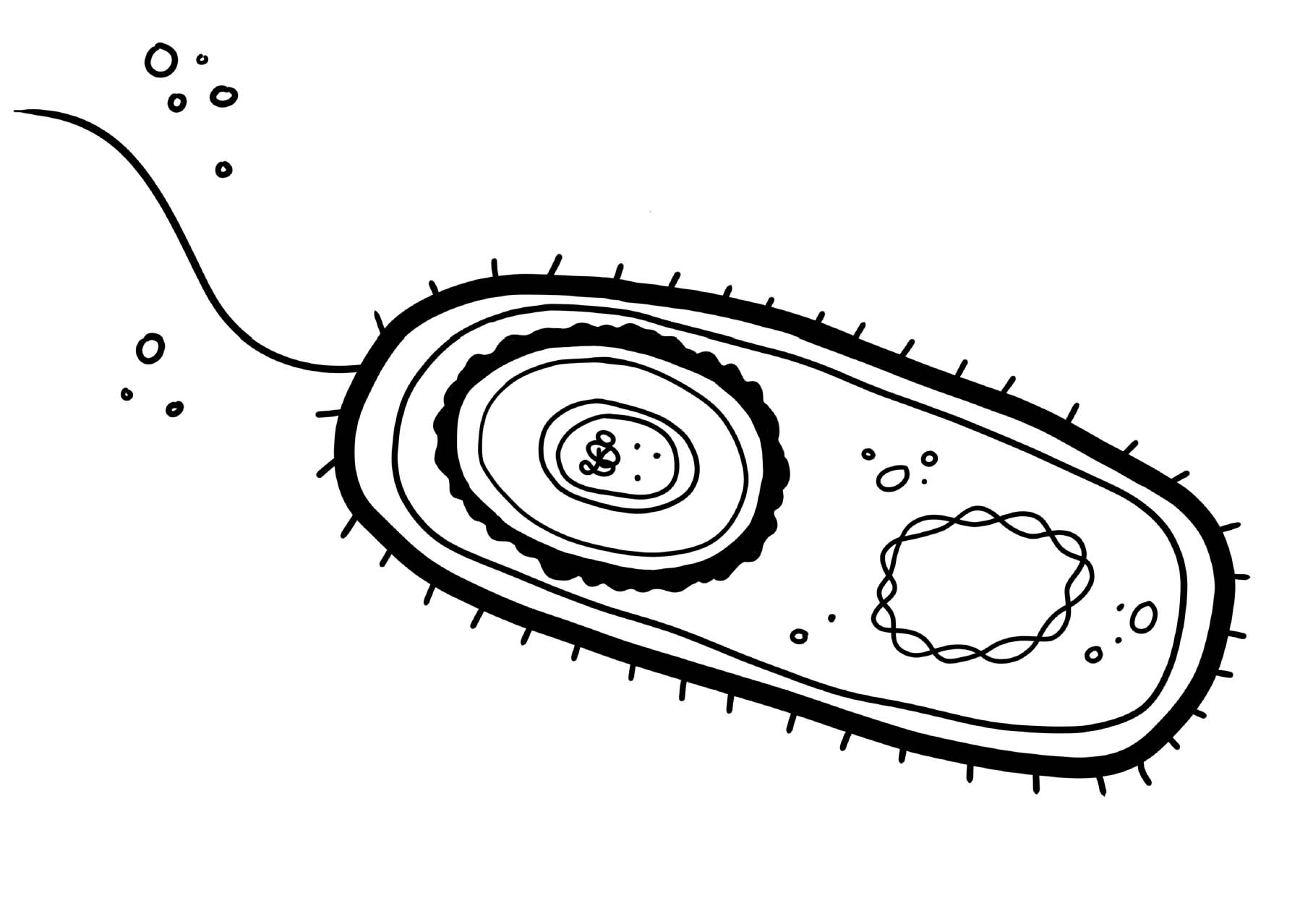

0 thoughts on “What Causes Moths In The Pantry”